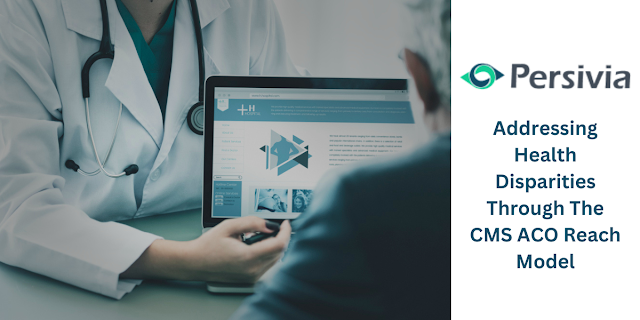Addressing Health Disparities Through The CMS ACO Reach Model
The CMS ACO Reach Model is a payment and service delivery model designed to improve health
equity and quality of care for Medicare beneficiaries. ACOs participating in
this model receive additional payments and support to address health
disparities and social determinants of health.
Here's how this CMS model is making a difference:
Strategies for Addressing Health Disparities
- Community Engagement: ACOs engage with local communities to
understand their unique needs and develop targeted interventions. This
engagement may include partnerships with community organizations and
leaders to address social determinants of health.
- Care Coordination: They improve care coordination among
healthcare providers to ensure beneficiaries receive timely and
appropriate care. This includes ensuring that patients receive necessary
follow-up care and referrals to specialists.
- Social Determinants of
Health: ACOs address social
determinants of health, such as housing, food insecurity, and
transportation, which can impact health outcomes. They may provide
resources and support to help beneficiaries access these services.
- Cultural Competency: Healthcare organizations promote cultural competency among healthcare providers to ensure that care is sensitive to the diverse needs of patients. This includes providing training and resources to help providers better understand and address their patient's cultural beliefs and practices.
Impact of the CMS ACO Reach Model
- Improved Access to
Care: Beneficiaries in
underserved communities have improved access to primary care, preventive
services, and specialty care. This has led to better management of chronic
conditions and improved overall health.
- Better Health
Outcomes: The model has led to
improvements in health outcomes, including reductions in hospitalizations
and emergency department visits. Beneficiaries receive more appropriate
and timely care, leading to better health outcomes.
- Reduced Disparities: By addressing social determinants of health and improving care coordination, the model has helped reduce disparities in health outcomes among Medicare beneficiaries. Beneficiaries in underserved communities are experiencing more equitable health outcomes compared to their peers in more affluent areas.
Future Directions
Moving forward, there are several areas for future development and expansion:
- Expansion: The CMS ACO Reach Model may be expanded to
reach more beneficiaries and address health disparities in additional
communities. This could incorporate expanding the model to other states
and regions.
- Innovation: Healthcare organizations are encouraged to
innovate and develop new strategies to address health disparities. This
could include leveraging technology, such as telehealth and remote
monitoring, to improve access to care for beneficiaries in underserved areas.
- Partnerships: They can continue to partner with local community organizations and leaders to address social determinants of health. By working together, ACOs and community partners can develop more effective and sustainable solutions to health disparities.
Connect with Persivia to learn more about ACO Reach.


.png)
Comments
Post a Comment
Please do not enter any spam link in the comment box